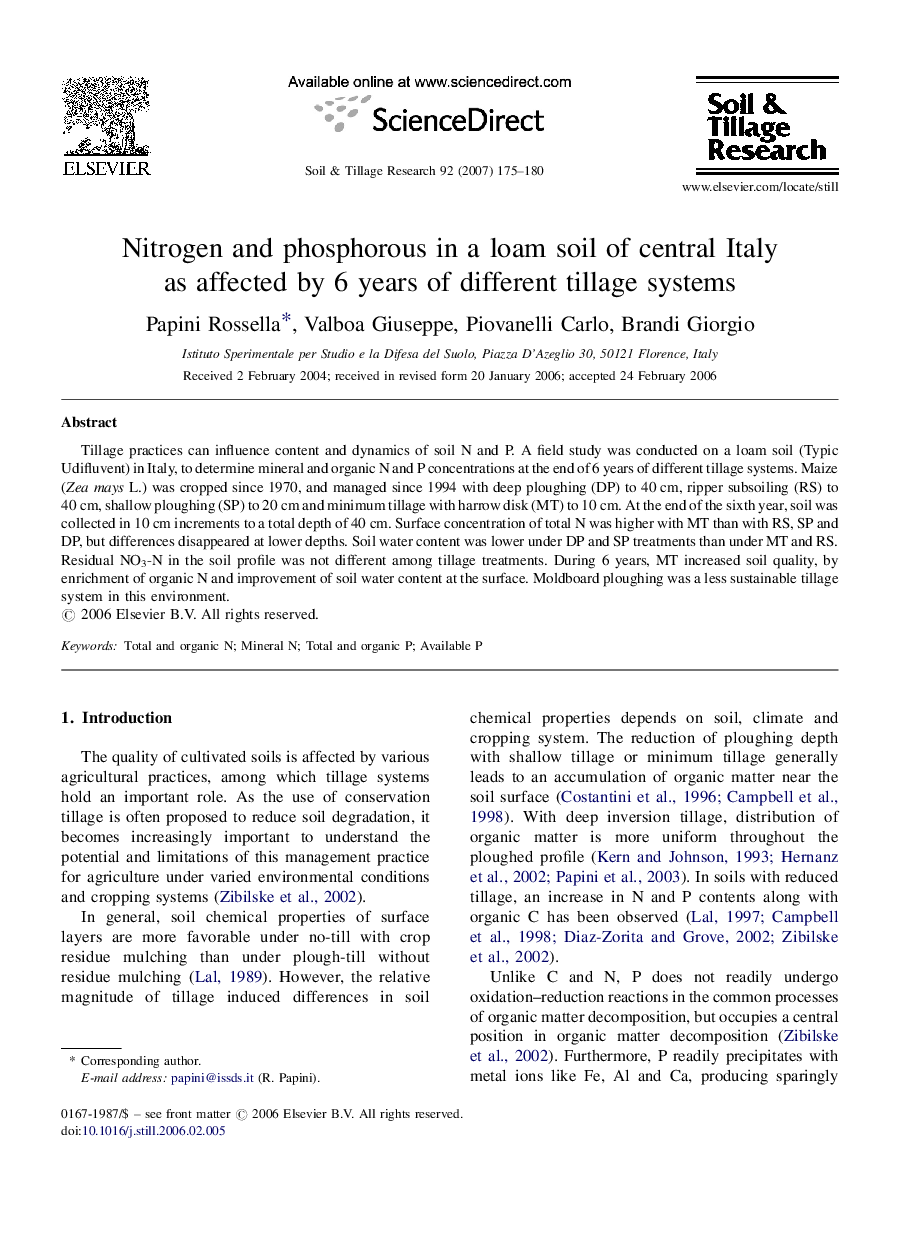| کد مقاله | کد نشریه | سال انتشار | مقاله انگلیسی | نسخه تمام متن |
|---|---|---|---|---|
| 306788 | 513114 | 2007 | 6 صفحه PDF | دانلود رایگان |

Tillage practices can influence content and dynamics of soil N and P. A field study was conducted on a loam soil (Typic Udifluvent) in Italy, to determine mineral and organic N and P concentrations at the end of 6 years of different tillage systems. Maize (Zea mays L.) was cropped since 1970, and managed since 1994 with deep ploughing (DP) to 40 cm, ripper subsoiling (RS) to 40 cm, shallow ploughing (SP) to 20 cm and minimum tillage with harrow disk (MT) to 10 cm. At the end of the sixth year, soil was collected in 10 cm increments to a total depth of 40 cm. Surface concentration of total N was higher with MT than with RS, SP and DP, but differences disappeared at lower depths. Soil water content was lower under DP and SP treatments than under MT and RS. Residual NO3-N in the soil profile was not different among tillage treatments. During 6 years, MT increased soil quality, by enrichment of organic N and improvement of soil water content at the surface. Moldboard ploughing was a less sustainable tillage system in this environment.
Journal: Soil and Tillage Research - Volume 92, Issues 1–2, January 2007, Pages 175–180